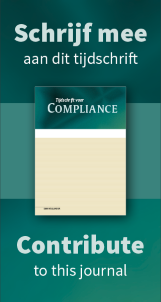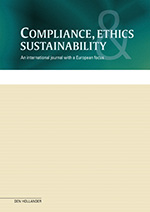Critical success factors for multinationals in monitoring their ethics and compliance programs
Helene Millenaar*
Introduction In the last decades companies have paid a huge price for not being compliant, for behaving in an unethical way. The risks have multiplied over the last decades with increasing complex legislation and ever-increasing fines and reputational damages for companies following corporate scandals. To motivate their employees to do the right thing and to avoid corporate scandals, companies must build a business case in which ethics form part of a company’s corporate culture. Nowadays customers,
Artikel kopen € 79,00 excl. BTW
In plaats van abonneren kunt u dit artikel ook afzonderlijk kopen.
employees, investors, other stakeholders and regulators place a very high premium on trust. Trust in the reliability and integrity of a company. Good governance, a sound corporate culture and an effective ethics and compliance program (E&C Program) are key to earning that trust. Companies will reap the benefits when they earn that trust as it will result in better corporate performance. This calls for robust E&C Programs. To test the impact of their E&C Programs, companies should monitor their programs. These monitoring processes should not only focus on hard controls but also on the soft elements which are indicative of the corporate culture. Effective monitoring of the E&C Programs is a common challenge for many organizations due to lack of detailed guidance.1 As a result of the growing importance of this issue such guidance is required. This article provides practical guidance to multinationals about monitoring which will enable these multinationals to continuously improve the impact of their E&C Program on employees and other stakeholders.2 Section 1 sets out the critical drivers for proper corporate governance. Next Section 2 zooms in on specific parts of the governance process being monitoring in enterprise risk management (ERM) and internal control processes. Section 3 will summarize guidance from regulators, other prominent organizations and scholars on the essential elements of an E&C Program, which includes monitoring. Section 4 reflects on the basis of available literature and guidance material how multinationals can best accomplish effective monitoring of both hard and soft compliance-related controls. Section 5 outlines some best practices of a number of Dutch multinationals in monitoring their E&C Programs. All of the above results in Section 6 which lists critical success factors for multinationals in monitoring their E&C Programs.
U heeft op dit moment geen toegang tot de volledige inhoud van dit product. U kunt alleen de inleiding en hoofdstukindeling lezen.
Wanneer u volledige toegang wenst tot alle informatie kunt u zich abonneren of inloggen als abonnee.




